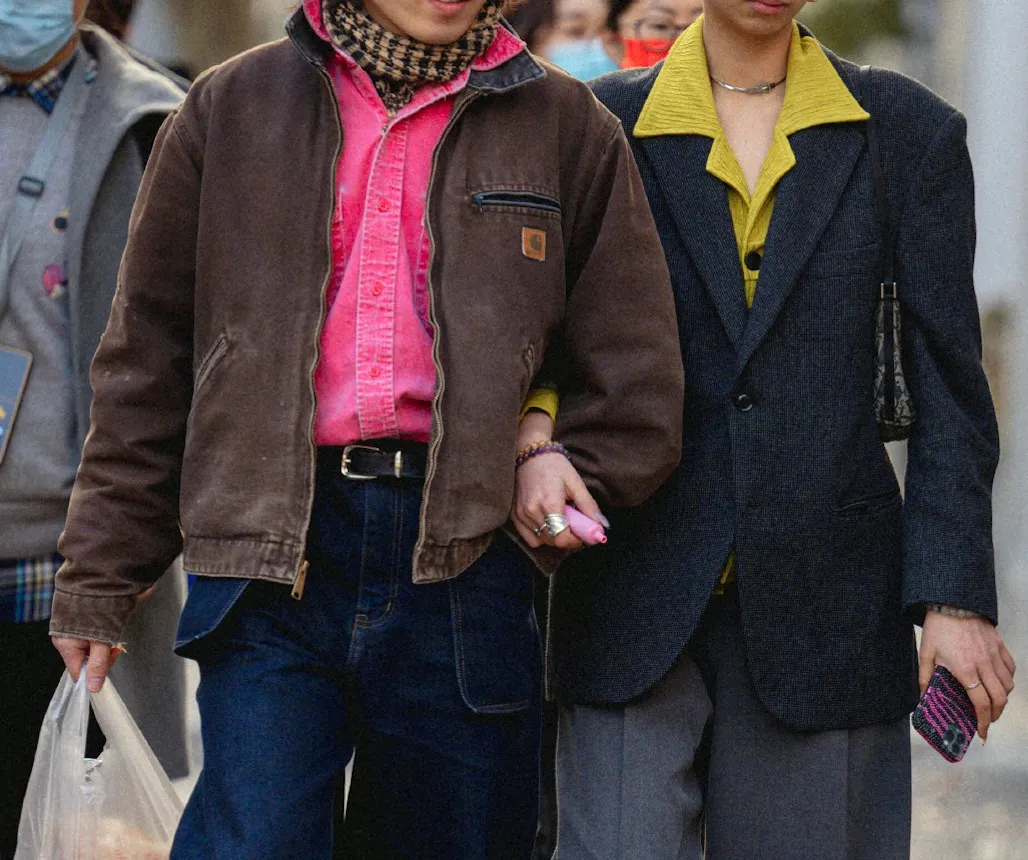Analysis of China’s garment export in 2021
2022-06-21EditedbyZhaoXinhua
Edited by Zhao Xinhua

China’s garment exports (including garment accessories,the same below) reached USD 175.83 billion,up 24.4 percent year-on-year and 16.2 percent compared with the same period in 2019.China’s garment export has grown steadily since its entry into WTO,reaching the peak of USD 186.28 billion in 2014.With the rise of domestic costs and the shift of international procurement trend,the export has gradually decreased,and the export has decreased to USD 141.31 billion affected by the pandemic in 2020.With the recovery of external demand and the return of some orders and other favorable factors,China’s garment export again exceeded USD 170 billion in 2021,according to the statistics of China Customs.
In terms of quarterly exports,in the first half of this year,Due to the recovery of international market demand and the small base of the same period last year,China’s garment export grew rapidly,increasing by 47.4 percent and 35.7 percent in the first and second quarters respectively.In the second half of the year,due to the high export base of last year,the growth rate slowed down significantly in the third quarter,with an increase of 9.6 percent.In the fourth quarter,the growth rate was 21 percent due to the strong holiday purchase demand in foreign markets.
Export and prices have grown rapidly
The export of knitted garments reached USD 75.35 billion from January to December,up 42 percent year-on-year and 24.5 percent over the same period in 2019.Export unit prices rose 9 percent year-on-year.The export of other categories increased by more than 40 percent except for silk knitted garment.


The export of woven garment reached USD 67.9 billion from January to December,up 12.5 percent year-on-year and 6.2 percent over the same period in 2019.Export unit price increased 19.7 percent yearon-year.Due to the large export base of medical protective clothing (classified as chemical fiber woven garment) last year,the chemical fiber woven garment only grew 5.3 percent year-on-year,dragging down the export growth of woven garment.
Major garment export categories recovered
From January to December 2021,major garment export categories all increased,with exports of pants,sweaters,T-shirts,shirts and jackets increasing by 28.9 percent,36 percent,24.7 percent,32.1 percent and 54.2 percent respectively.With the normalization of the pandemic in 2021,the consumption demand for outgoing clothing in major foreign markets increased significantly,and the export of outgoing clothing such as down jackets,coats,hats,scarves and ties increased by more than 40 percent.Exports growth of pajamas,baby clothes and socks is relatively small,only 12%.
The export of medical protective clothing decreased significantly
The consumption of conventional clothing fell sharply in 2020,the demand for pandemic prevention materials surged,and the export of garment was largely driven by pandemic prevention materials supplies.As the global fight against COVID-19 normalized,foreign demand for pandemic prevention materials gradually declined.From January to December 2021,the export of medical protective clothing was USD 7.49 billion,down 57 percent year-on-year.The export of medical gloves reached USD 10.33 billion,up 14.8 percent year-onyear.With the recurrence of the pandemic,it is expected that the export of pandemic prevention materials will maintain a certain scale,but the driving role of garment export will be significantly reduced.
Exports to major markets grew
From January to December,China’s garment exports to the three major markets of the United States,the European Union and Japan increased by 36.7 percent,21.9 percent and 6.3 percent respectively;exports to countries along the Belt and Road increased by 28.5 percent;exports to ASEAN,the Middle East,Africa and Latin America increased by 26.1 percent,21.6 percent,29.9 percent and 52 percent respectively;exports to South Korea,Australia and Canada rose 22.9 percent,29.5 percent and 11.3 percent,respectively,while exports to the United Kingdom and Russia fell 4 percent and 4.8 percent,respectively.
Exports to the United States hit a record high
The market demand broke out driven by the fiscal and monetary stimulus plan of the United States in 2021.The garment retail in the United States repeatedly hit record highs.The annual sales of garment stores reached USD 30.06 billion,up 47.3 percent year-onyear and 12 percent compared with 2019,significantly surpassing the pre-pandemic level.China’s garment exports to the U.S.also set a record.First,China’s annual garment exports to the U.S.reached USD 41.13 billion,exceeding USD 40 billion for the first time.Second,exports to the U.S.grew by 36.7 percent year-onyear and 25.7 percent compared with 2019,the highest growth rate among major export markets.Third,the share of exports to the U.S.in total exports exceeded 23 percent for the first time,an increase of 1.8 percentage points compared with 2019.
Despite the continuous economic and trade frictions between China and the United States in recent years,the United States is still the largest single country market for China’s garment export,and American purchasers are still highly dependent on China’s garment industry.After a year of explosive demand growth,affected by inflation,fading effects of stimulus policies,excessive consumption,rising prices and other factors,garment consumption in the U.S.market in 2022 is expected to have a lack of momentum,and the demand is likely to be lower than last year.
Exports to the EU are recovering
The EU economy experienced a sharp recession caused by the pandemic in 2020.The economy recovered in 2021,especially after the third quarter,the recovery accelerated,and the demand for garment also improved.From January to November,the total amount of garment imported by the EU from around the world increased by 11.4 percent year-onyear,and has recovered to the level of 2019.China’s exports to the EU amounted to us USD 33.67 billion in 2021,up 21.9 percent year-on-year and 17.3 percent from 2019.
Exports to Japan have yet to recover to pre-pandemic level
The recovery of Japanese consumption stagnated in 2021.The retail sales of garment and accessories were 7.6 trillion yen in the first 11 months of this year,up only 3 percent year-on-year,and down 21.3 percent significantly compared with the same period of 2019.Japan’s total garment import from the world from January to November was only 89 percent of that of the same period in 2019,and has yet to recover to the pre-pandemic level.China’s exports to Japan reached USD 14.93 billion in 2021,up 6.3 percent year-onyear and down 2.8 percent compared with 2019.Exports to Japan’s share of China’s total garment exports fell to 8.5 percent in 2021 from 14.4 percent in 2011.

The decline in China’s share of major consumer markets has slowed
From January to November,China’s share of U.S.textile and garment imports was 28 percent,down 3 percentage points from the same period in 2019.China accounted for 56.4 percent of Japan’s textile and garment imports,up 0.2 percentage points from the same period in 2019.China’s share of EU textile and garment imports was 31.1 percent,1.6 percentage points higher than the pre-pandemic period.The recurrence of the global pandemic brought great uncertainties to the stability of the garment supply chain.Since the outbreak,the trend of transferring production capacity overseas has slowed down.As the center of the global textile and garment industry chain,China has strong resilience and comprehensive advantages,playing a role of key stand.
Export status of provinces and cities
The garment export of Guangdong province performed well in 2021.On the one hand,Guangdong province took advantage of its location advantage to accept part of the return orders from Southeast Asia;on the other hand,Guangdong province actively developed oversea location,cross-border e-commerce and other new forms of foreign trade.The total export volume steadily ranked the first place,and the annual export increased by 29.6 percent,exceeding the national average growth rate.Zhejiang and Jiangsu grew 21.9 percent and 15.2 percent,respectively,below the national average.Shandong and Fujian saw growth of 34.6 percent and 43.9 percent respectively,both higher than the national average.In the central and western provinces,Shanxi,Yunnan,Ningxia,Sichuan and Qinghai all saw growth of more than 100 percent.
Export outlook
In 2022,garment export will face great challenges to maintain steady growth based on the high base of 2021.
First,as the COVID-19 pandemic continues and the pandemic remains an uncertain factor,the global economy will continue its tortuous recovery.According to the World Bank’s latest World Economic Outlook report,global economic growth is expected to slow significantly,from 5.5 percent in 2021 to 4.1 percent in 2022 and further to 3.2 percent in 2023.The WTO expects growth in the volume of global trade in goods to slow to 4.7 percent from 10.8 percent in 2021.
Second,the international environment has become increasingly complex,trade regionalization has become a new feature,and uneven recovery has led to rising global systemic risks.Affected by the vaccine gap and policy gaps,the recovery gap between low-income countries and developed economies is widening,currencies are depreciating and inflation is high.The gradual fading of stimulus policies in some countries may lead to shrinking demand and price fluctuations.
Third,after the pandemic is under control in Southeast Asia and other countries,the capacity transfer of the garment manufacturing industry will continue to accelerate,causing an impact on domestic exports.China’s yarn and fabric export is closely related to thepandemic prevention and control in Southeast Asia and other importing countries and the recovery of overseas supply chains.China’s yarn and fabric export in 2021 gradually returned and exceeded the pre-pandemic level.In the second half of the year,the growth rate of finished garment exports has gradually slowed down,significantly lower than that of intermediate products.With the resumption of work and production in Southeast Asia and other countries,orders that were previously returned to China have begun to be transferred back to Southeast Asia.Vietnam’s garment exports to the world grew by 50 percent year-on-year in December 2021,while exports to the United States rose by 66.6 percent.
Fourth,disruptions and bottlenecks in the global supply chain cannot be completely alleviated in the short term.Fluctuations in the exchange rate,high shipping costs,dual control of energy consumption,and soaring prices of raw material last year still caused enterprises to “dare not accept orders” and“increase revenues but not profits”.In particular,the overall costs of micro,small and medium-sized enterprises have risen significantly,and operating risks and pressures remain high.
In the meantime,we should also note that with the normalization of the global pandemic prevention and control and the further release of economic policies adopted by various countries,the economy has shown a positive trend in the stage.Garment industry is an advantageous industry in China with strong industrial foundation and strong international competitiveness.There is still a great space for development in intelligent manufacturing,design and research.The long-term positive fundamentals of China’s garment industry remain unchanged,and will shift from quantitative expansion to qualitative improvement.With the gradual implementation of various national policies and measures to stabilize foreign trade,RCEP has officially come into force and the wave of digitalization,intelligence and greening is coming,which will bring new development opportunities to the transformation and upgrading of the garment industry.
